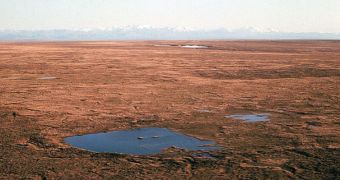Scientists have recently determined that prolonged, intense and heavy snowfall in Arctic regions can lead to the death of native plant species, but only indirectly. These conditions apparently foster the development of killer fungal strains, that can wipe out entire plant populations.
Snowfall can bring about the exact conditions that these microorganisms need in order to spread out of control, and to begin killing every living thing in its path. Interestingly, snowfalls are usually beneficial to Arctic plants.
The snow help isolate the vegetation from the low temperatures above, allowing the former to grow to more impressive sized. But this positive correlation only holds when small to moderate amounts of snow fall over a certain area.
Experts who conducted the new international study in the Arctic say that the effects of fungal development of frozen Arctic landscapes has never been analyzed in detail before the new expedition.
In a paper published in the June 19 online issue of the top scientific journal Nature Climate Change, the researchers say that these fungal growth also have long-lasting effects. In other words, it takes a long time for the environment to return to its former self after such an outbreak.
These fungus strains were proven to be capable of shaping the very nature of Arctic food webs. If a species disappears, then the higher animal species that use it for food will dwindle as well. Creatures from insects to mammals feel the effects of the fungal infections.
“We were surprised to find that this extremely hardy tundra vegetation was killed off by fungal attack. We need to look more carefully in the future at longer term vegetation and fungus life cycles to see if this is something that could recur and be more destructive over time,” says Dr. Robert Baxter.
“In the first few years […] the insulating effect of the snow helped the vegetation to grow, but after six years a tipping point was reached where the fungus spread with great speed and destroyed the plants,” adds Baxter, an expert at the Durham University School of Biological and Biomedical Sciences.
Experts from the Umeå University, the Swedish University of Agricultural Sciences, in Uppsala, and the Finnish Forest Research Institute were also involved in the new, long-term investigation.
“We discovered some surprising interactions between plants and other organisms in an area that is very important for the world's climate. The results will enable us to have a better understanding of longer term climate change effects and extreme weather events, locally and regionally,” says Lars Ericson.
The report coauthor is based at the Umeå University Department of Ecology and Environmental Science, e! Science News reports.

 14 DAY TRIAL //
14 DAY TRIAL //